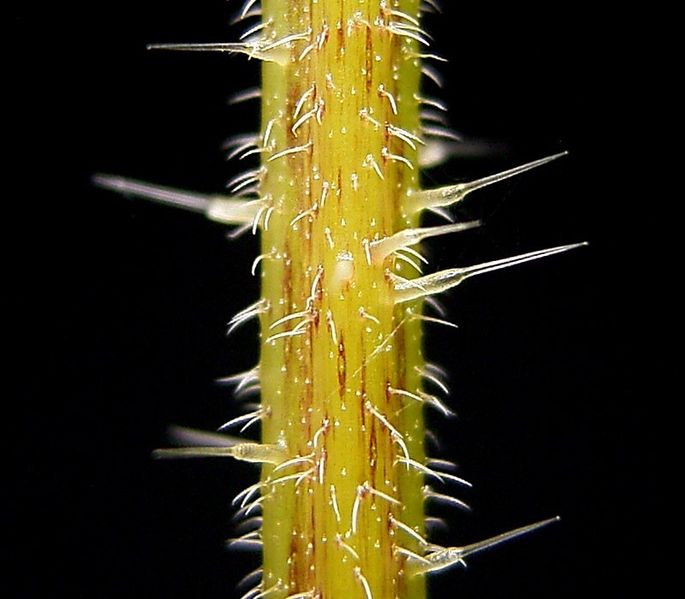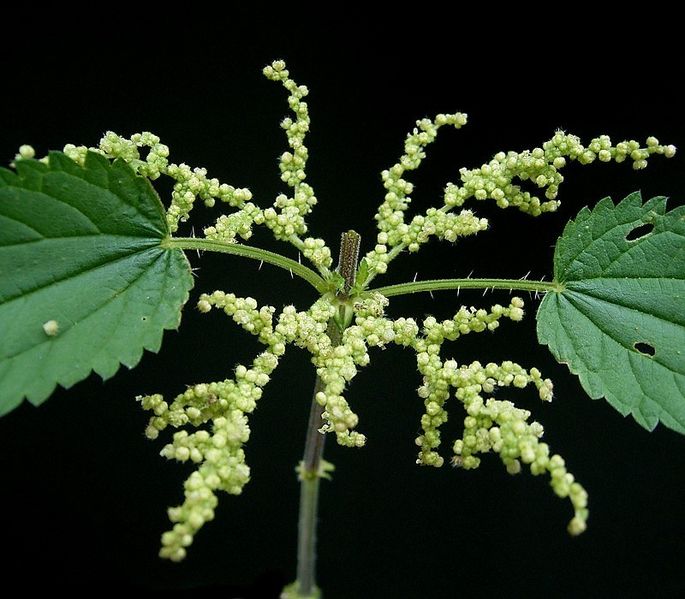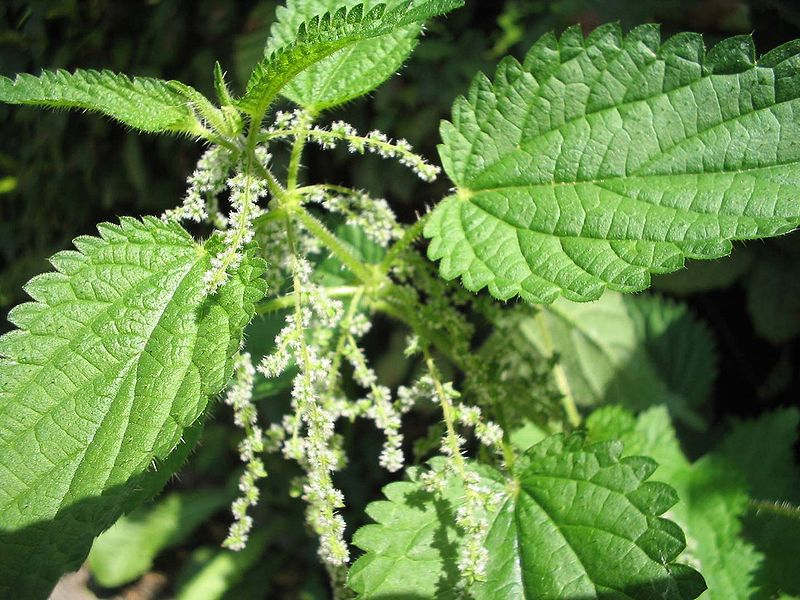Stinging Hairs and Other Unique Adaptations
 Stinging
Hairs
Stinging
HairsStinging nettles are so high in nutrition that they have developed stinging cells to deter herbivores from eating them. The plants contain long, thin, hollow hairs that cover the majority of the stem and the underside of the leaves. These hairs contain stinging chemicals. The amount of stinging hairs on a particular plant varies by region. When these needle-like hairs break off, histamine and formic acid are released. When these compounds come into contact with skin, they cause a painful stinging and burning sensation along with a white rash accented by red, inflamed skin. This toxic reaction that occurs in animals and humans varies in severity. Little is known regarding the specific cellular and molecular mechanism that occurs when an organism is stung. However, it has been determined that the release of the histamine is the initial reaction when an organism is stung, but it is believed by some that further reactions occur between the plant’s chemicals and the organism’s body. Urtica dioica may contain additional substances that are toxic to the nerves or that are responsible for a secondary release of other toxins.
The leaves of Urtica dioica are where the process of photosynthesis occurs. Because photosynthesis requires sunlight, it is essential that the leaves are all exposed to the sun. To allow this, the leaves of stinging nettles grow in an alternating pattern and in sets of two along the stem. The leaves also grow perpendicular to the ground because the flat surface allows for more light energy to come into contact with the leaves.
Over time, the reproductive structures of male Urtica dioica plants have evolved, allowing for their stamens to pop out and fling pollen when the flowers become mature. Because of the stinging hairs on nettles, fewer animals interact with the plants. Due to fewer animal interactions, the plants have adapted to disperse their pollen into the air in order to be transported by the wind. The male flowers also grow near the top of the plant to take advantage of greater height when distributing pollen.
Because stinging nettles rely on the wind and not on animals for pollination, their flowers can be dull in color and unscented. They also have small petals because it is not necessary for insects to have a space to land on the plant to aid in pollination. These less flamboyant adaptations save the plant energy that can be used elsewhere.
Next learn how these plants obtain nutrients.

